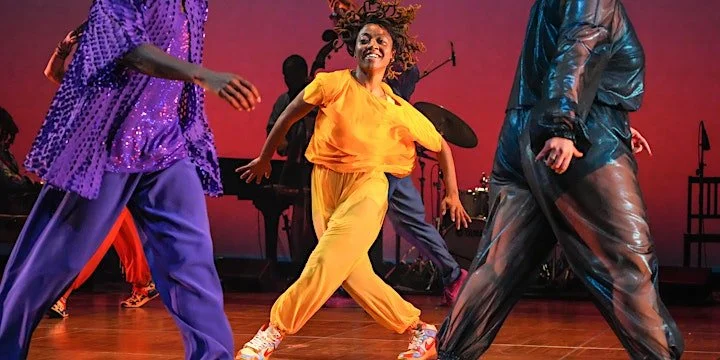This response is a section of a project I did for my Postcolonial Approaches to Dance Studies Class, where I discussed the problematic nature of privileging product over process in academic dance institutions. In this section I am responding to my experience of LaTasha Barnes’s The Jazz Continuum at Columbia College Chicago’s Dance Center as a part of the Dance Presenting Series.
Being able to witness this offering in person was an absolute honor and was a wonderful presentation of how hierarchy in performance spaces can be disrupted and decolonized. First and foremost, having the announcement at the beginning of the show to give context to the work helped to establish audience expectation and understanding of how to receive the work outside of a colonial perspective, particularly when they clarified that this was not a performance or a show, but was instead an offering.
This idea, of it being an offering as opposed to a show or performance, is a direct connection to an idea that is discussed by Tracy McMullen, in her essay “The Improvisative,” where she talks about the idea of generosity in improvisation as a way to counter restrictive subject/other relationships, where people are only able to establish their identity and their social standing, in relationship to the recognition of the other. By declaring this experience as an offering they are exhibiting a generosity that comes with having an “improvisative” relationship with the other as opposed to a performative one (McMullen).
In addition, this clarification initiated the creation of a space where the dancers and musicians were not beholden to the expectations or levels of cultural understanding that the audience may have. They were clear with their intentions, and in doing so they gave themselves the room to move and play as they pleased. In this introductory verbal offering, all of the musicians and dancers were introduced by name which gave a very real and human experience to what was happening on stage as opposed to setting up some sort of elusive mystery of what the audience was seeing.
The Joy that was witnessed and clearly experienced on stage was unlike anything I’ve seen in a concert setting before. The dancers’ obvious comfortability with one another as well as their ability to pick up movement from one another was astounding. The back and forth between the dancers and the musicians also added an element of spontaneous creation and improvisation. The space that they were able to create with their artistic offerings felt truly authentic in the notion of a Jazz Continuum, exploring the past, present, and future of jazz.
The Jazz Continuum rejected perfection, rejected urgency, and rejected white supremacy culture and colonial structures in their entirety. In no way did they attempt to hide their process in the product that they presented, but instead very clearly represented that the product is the process, is the invitation of outside participation, and finding the groove on the spot in different situations. They truly represented what it means to be boundless, and to create a space where one can feel free.

